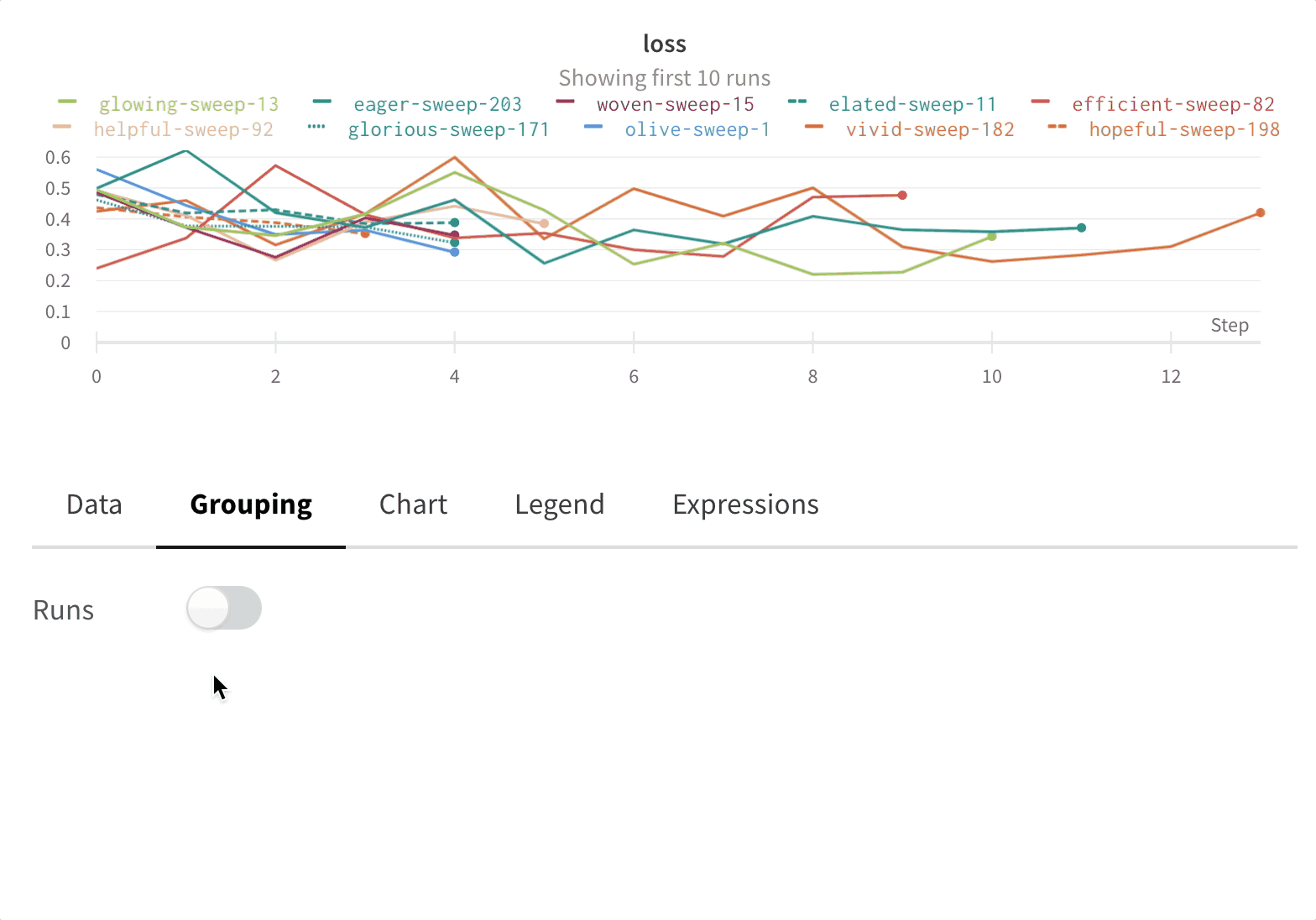Use cases
- Distributed training: Use grouping if your experiments are split up into different pieces with separate training and evaluation scripts that should be viewed as parts of a larger whole.
- Multiple processes: Group multiple smaller processes together into an experiment.
- K-fold cross-validation: Group together runs with different random seeds to see a larger experiment. Here’s an example of k-fold cross-validation with sweeps and grouping.
1. Set group in your script
Pass an optional group andjob_type to wandb.init(). This gives you a dedicated group page for each experiment, which contains the individual runs. For example:wandb.init(group="experiment_1", job_type="eval")
2. Set a group environment variable
UseWANDB_RUN_GROUP to specify a group for your runs as an environment variable. For more on this, check our docs for Environment Variables. Group should be unique within your project and shared by all runs in the group. You can use wandb.util.generate_id() to generate a unique 8 character string to use in all your processes— for example, os.environ["WANDB_RUN_GROUP"] = "experiment-" + wandb.util.generate_id()
3. Toggle grouping by columns in the UI
You can dynamically group by any column, including a column that is hidden. For example, if you usewandb.Run.config to log batch size or learning rate, you can then group by those hyperparameters dynamically in the web app. The Group by feature is distinct from a run’s run group. You can group runs by run group. To move a run to a different run group, refer to Set a group in the UI.
In the list of runs, the Group column is hidden by default.
- Click Group.
- Click the names of one or more columns.
- If you selected more than one column, drag them to change the grouping order.
- Click anywhere outside of the form to dismiss it.
4. Manage groups in the UI
Manage a run
After a run is initialized, you can move it to a new group from your workspace or its Runs page.- Navigate to your W&B project.
- Select the Workspace or Runs tab from the project sidebar.
- To move a single run, search or scroll to it. Hover over the run name, click the three vertical dots, then click Move to another group.
- To create a new group, click New group. Type a group name, then submit the form.
- To delete a run, click the three vertical dots, then click Delete run.
- To move a run, select the new group from the list, then click Move.
Manage runs in bulk
This section shows how to manage multiple runs at once, across one or more run groups.- If necessary, toggle grouping by columns, grouping by the Group column.
- Expand a group to view its runs. In a single bulk operation, you can move runs from different groups to the same target group. Expand all relevant groups.
- To select all runs in a group, click the checkbox next to the group name.
- To select individual runs, click their checkboxes.
- To select all runs in all groups, click the checkbox next to the Name column heading.
- Above the table, choose a bulk operation: Tag, Move to group, Move to project, or New sweep.
Create a group
To create a new run group:- Navigate to your W&B project.
- Select the Workspace or Runs tab from the project sidebar.
- Click New group. Type a group name, then submit the form.
Delete a group
To delete a group, remove all runs from it. This automatically deletes the group.Customize how runs are displayed
You can customize how runs are displayed in your project from the Workspace or Runs tabs. Both tabs use the same display configuration. To customize which columns are visible:- Above the list of runs, click Columns.
- Click the name of a hidden column to show it. Click the name of a visible column to hide it. You can optionally search by column name using fuzzy search, an exact match, or regular expressions. Drag columns to change their order.
- Click Done to close the column browser.
- Hover over the column name, then click its action
...menu. - Click Sort ascending or Sort descending.
- Hover over the column name, then click its action
...menu. - Click Pin column or Unpin column.
- Click the action
...menu at the top of the list of runs. - Set Run name cropping to crop the end, middle, or beginning.
Distributed training with grouping
Suppose you set grouping inwandb.init(), we will group runs by default in the UI. You can toggle this on and off by clicking the Group button at the top of the table. Here’s an example project generated from sample code where we set grouping. You can click on each “Group” row in the sidebar to get to a dedicated group page for that experiment.
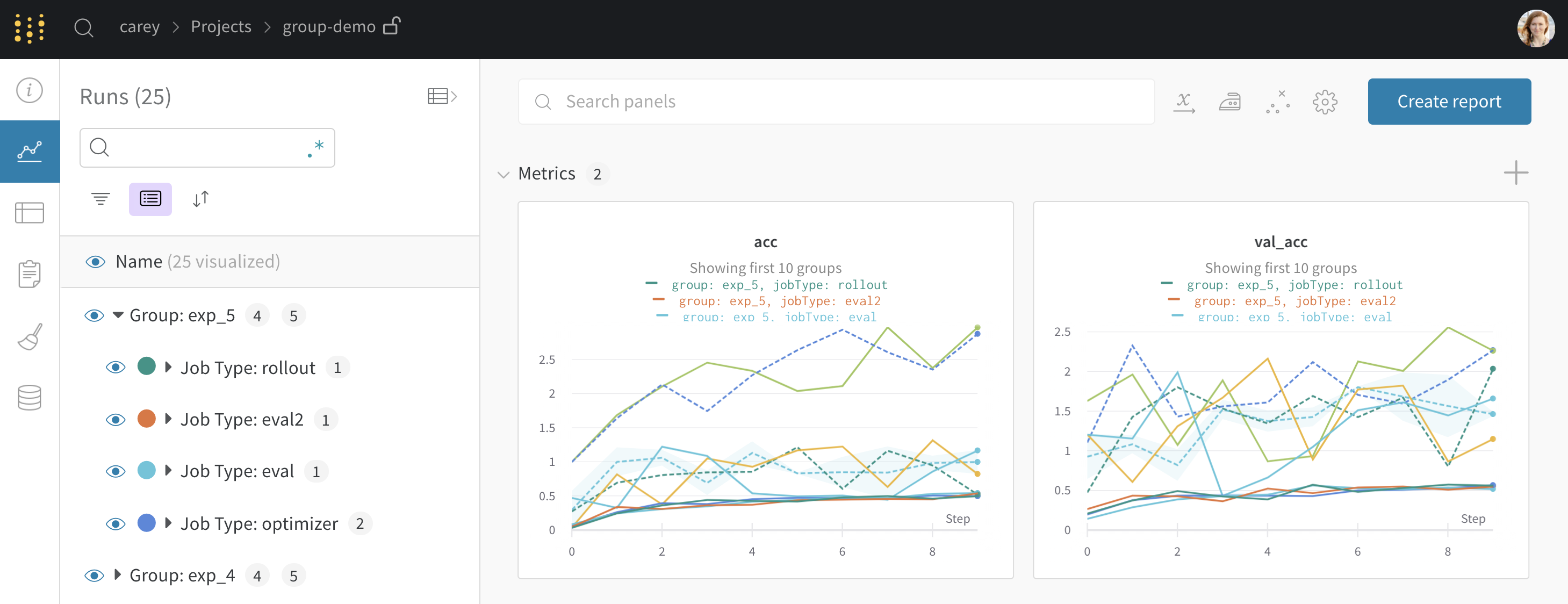
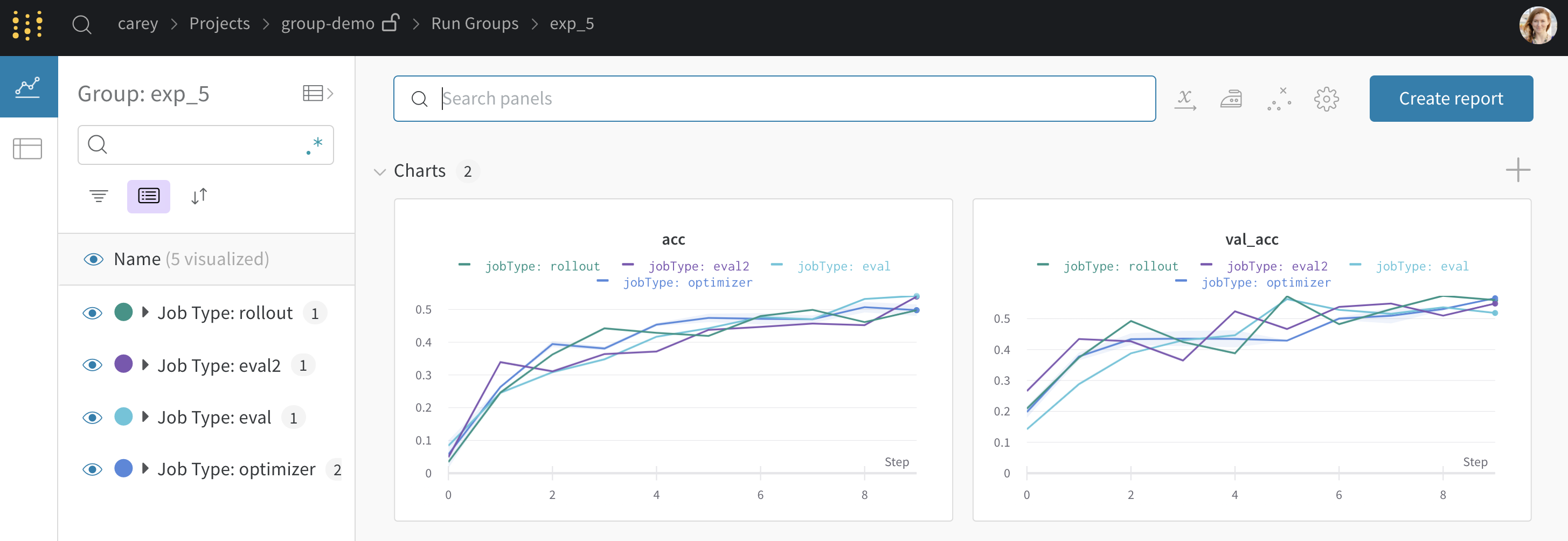
Grouping dynamically in the UI
You can group runs by any column, for example by hyperparameter. Here’s an example of what that looks like:- Sidebar: Runs are grouped by the number of epochs.
- Graphs: Each line represents the group’s mean, and the shading indicates the variance. This behavior can be changed in the graph settings.
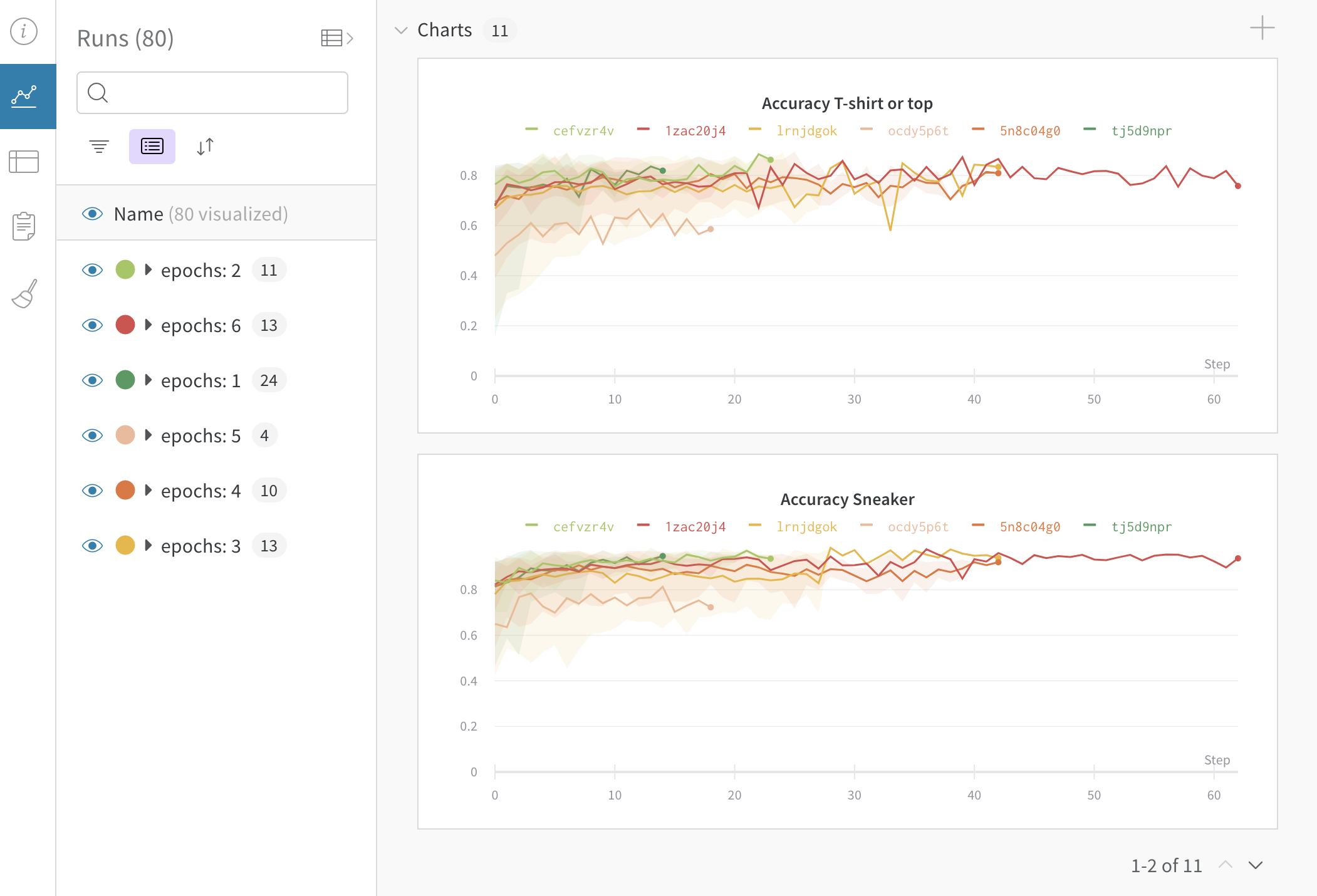
Turn off grouping
Click the grouping button and clear group fields at any time, which returns the table and graphs to their ungrouped state.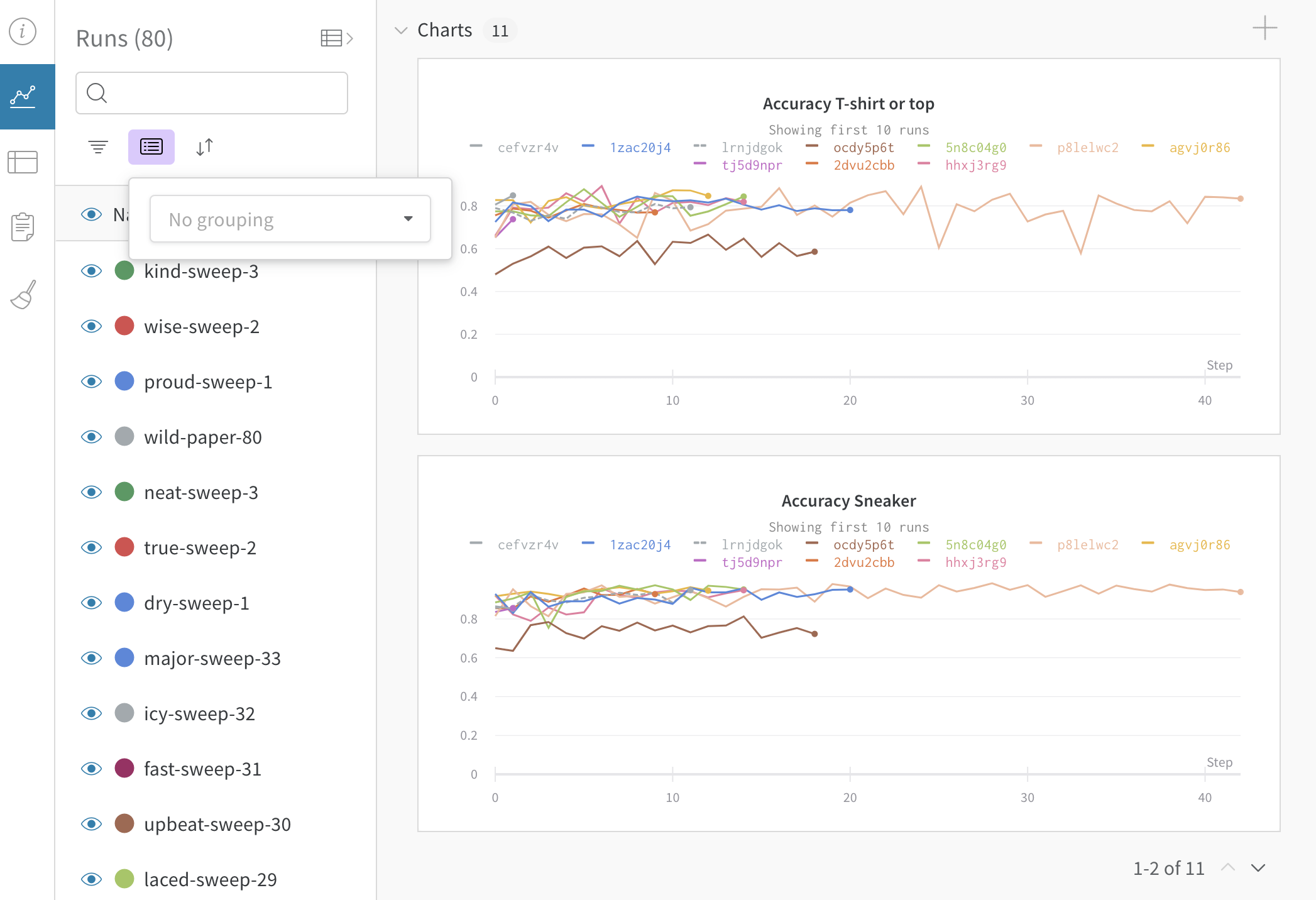
Grouping graph settings
Click the edit button in the upper right corner of a graph and select the Advanced tab to change the line and shading. You can select the mean, minimum, or maximum value for the line in each group. For the shading, you can turn off shading, and show the min and max, the standard deviation, and the standard error.